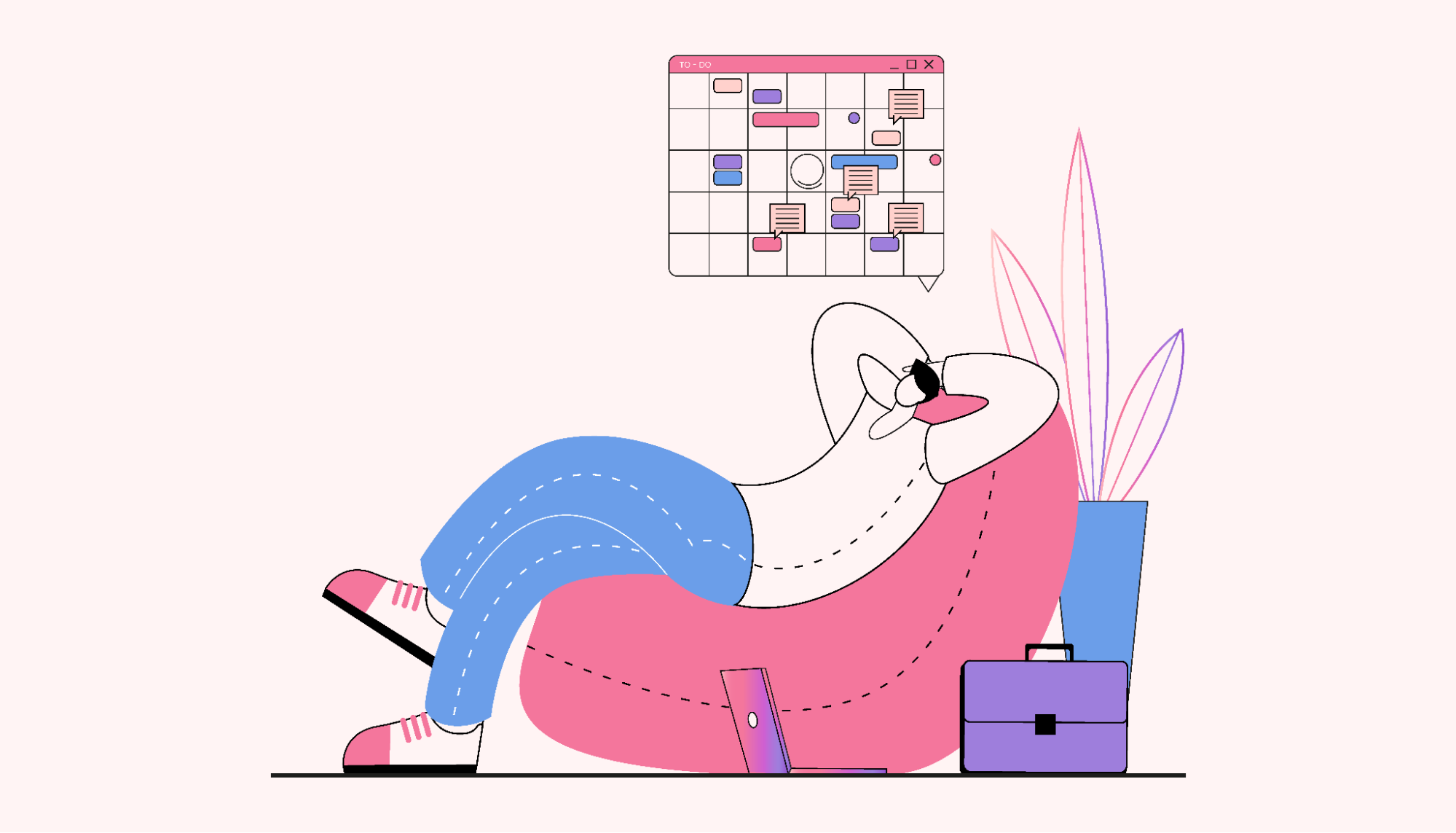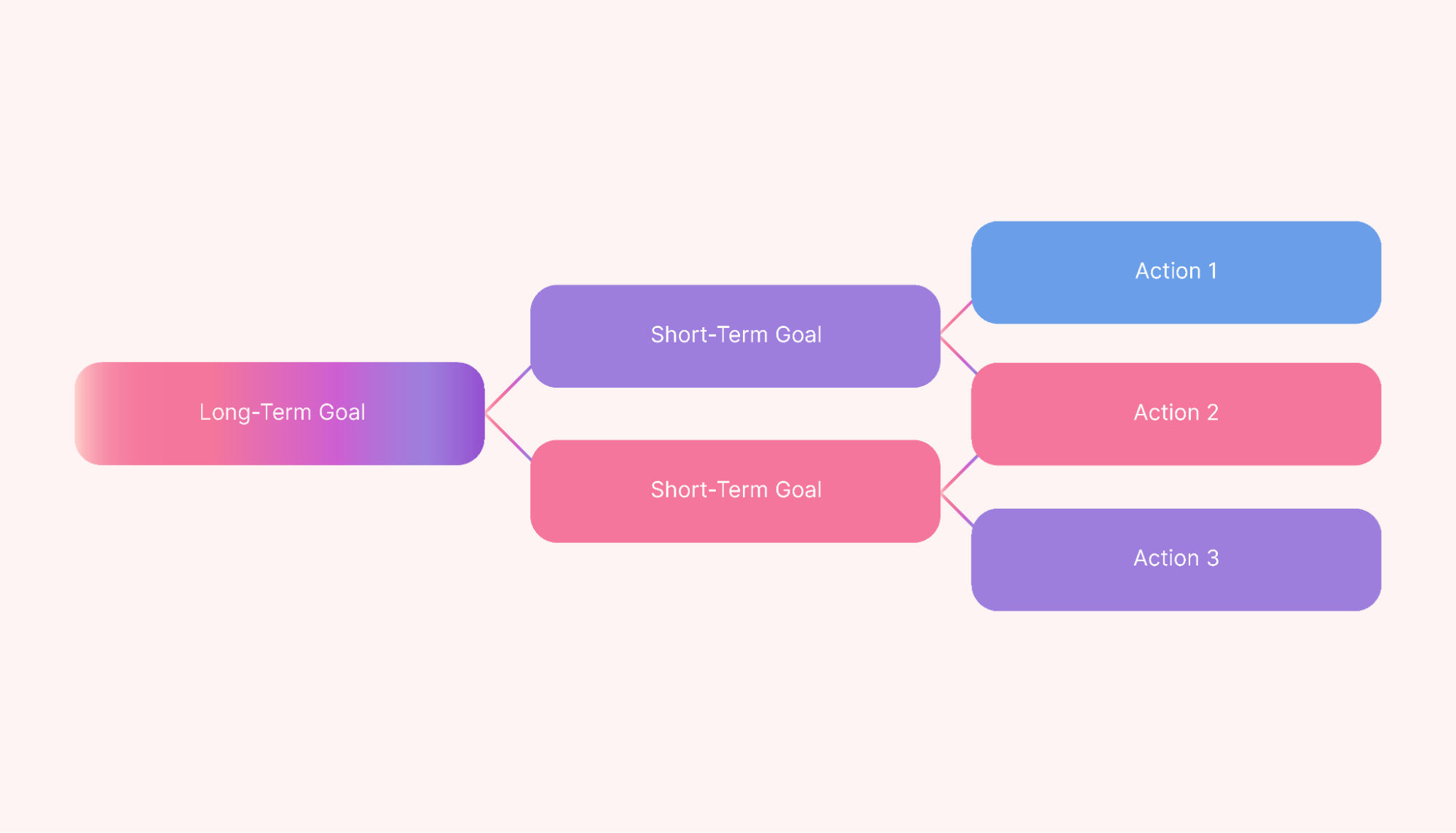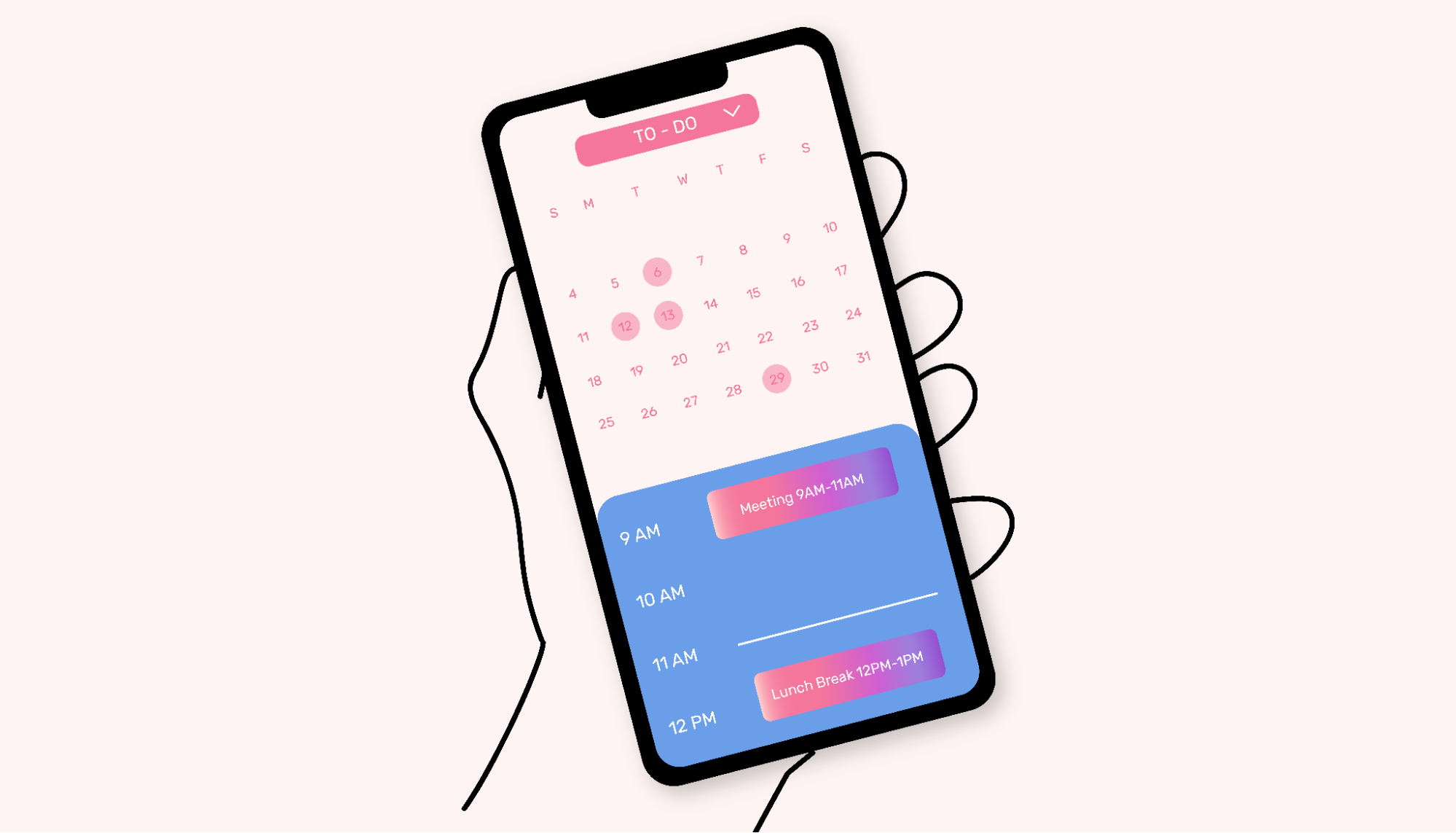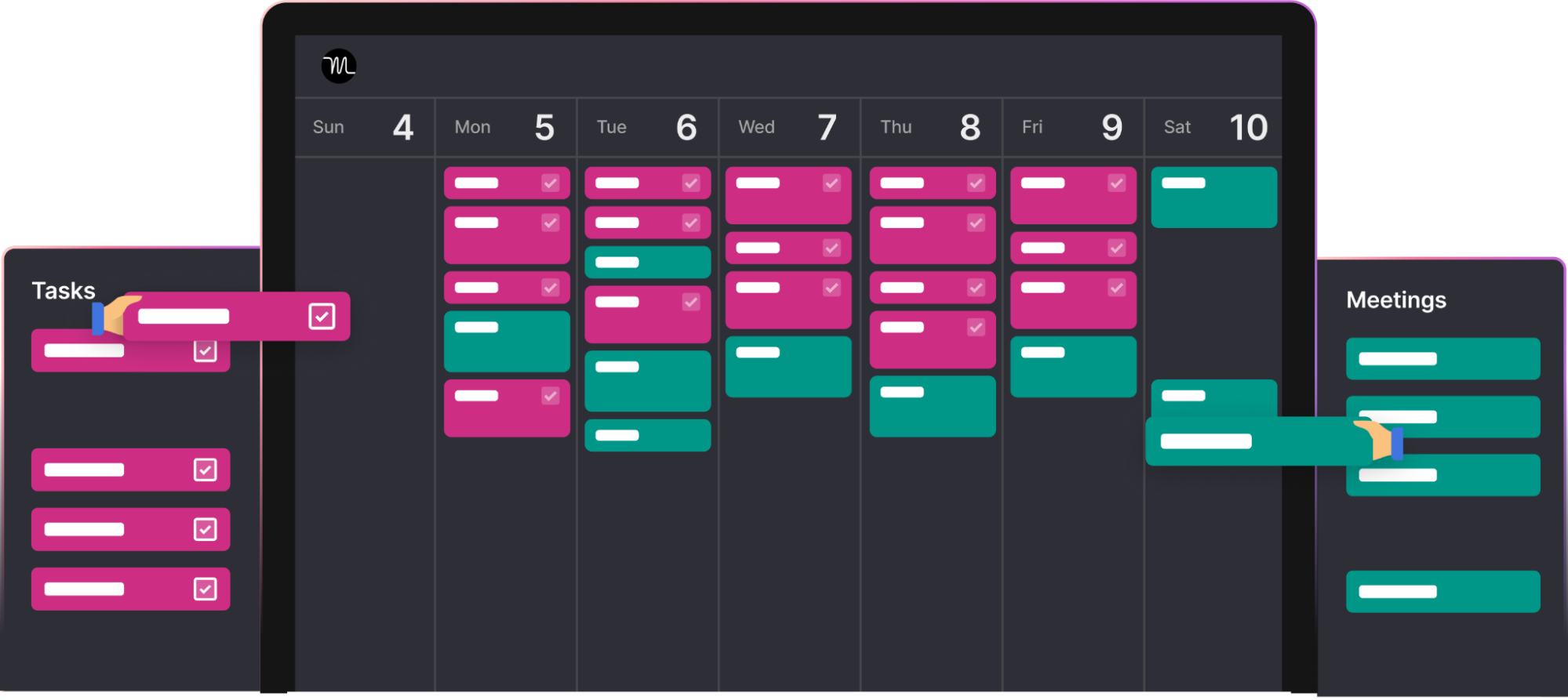So you’re putting in hours of work, but at the end of the day, you find you’ve done very little. You’re starting to miss deadlines, feel overworked, and become dangerously close to burnout.
If this sounds a little too familiar, you need a plan. Pronto.
Effective daily planning and weekly planning are keys to unlocking sustainable productivity. Without a structured plan in place, you waste time and energy figuring out what you should work on and prioritize.
It’s time to learn how to cut through the chaos and establish a sustainable planning routine that helps to keep your mind clear and calm.
The benefits of planning your day
Before planning becomes a habit and before you know how to do it effectively, it can feel like a massive waste of time. But when you have the right systems and habits in place, you’ll start to feel how planning improves your quality of life.
 |
The main benefits of planning your day include the following:
- Feeling organized: Having all your plans, deadlines, tasks, and appointments in one place helps you organize your thinking to reduce feelings of chaos.
- Staying focused: Planning gives you a map for your day, which helps you dive into each task fully instead of worrying that you’ve forgotten something.
- More motivation: Planning breaks your day down into manageable chunks, helping you feel capable and ready to jump into each mini-goal.
- Reduced stress: With a solid plan, you know exactly what to expect from every day. This gives you a base you can adjust to accommodate emergencies and interruptions.
- Increased self-awareness: Creating a plan takes you off autopilot and forces you to be aware of what you get up to every day. This makes it harder for small priorities to slip through the cracks unnoticed.
- Increased productivity: Regular planning teaches you how to keep your to-do list realistic. Making manageable plans protects your time and capacity so you can get to everything in a sustainable way.
Related: How to Be More Productive: 37 Tips & Some Secret Sauce!
How to plan your workday
With practice, planning becomes a habit that carries you through each day. You’ll feel organized, capable, and even excited about tackling your to-do list because your game plan is realistic and sustainable.
If you’re ready to start planning effectively, the following steps can help you unlock productivity and achieve your long-term goals.
Plan ahead of time
There are different schools of thought when it comes to deciding on the best time of day for a daily planning session, but the consensus is that planning before you start working is a good idea.
If you plan your day first thing in the morning, you’ll see things from a fresh perspective — and this can focus your mind on your work for the day. You may find that planning acts as your “first daily task,” giving you a sense of accomplishment you can use to build the momentum you need to complete all your other tasks.
But planning before your workday has drawbacks, too. Studies have shown that making many decisions predisposes you to decision fatigue — a phenomenon in which your decision quality decreases because you’ve used up your mental resources while making previous decisions.
We’re strong advocates for planning a day ahead of time. Planning for the next day can be difficult if your energy is low after long hours of concentrating, but the day’s work is still fresh in your mind. You’ll have an easier time creating a relevant plan for the next day because you’re still in the “work” mindset.
Identify your big goals for different timeframes
Identifying your goals gives you a direction to aim toward and helps fuel you when you’re low on energy and motivation.
If you don’t know what your work goals are, try asking yourself the following questions:
- What does your company expect from you in the next week? Month? Year?
- What projects are most urgent or important?
- How would you like to improve your performance at work?
- How can you better fulfill your responsibilities?
Organize your goals in order of their time frames so that you always know which goal you need to focus on next. For example, keep your weekly goals at the top of your weekly schedule, your monthly goals at the top of your monthly schedule, and so on.
Break your goals down into steps and deadlines
Looking at a list of long-term goals quickly gets overwhelming. But every long-term goal can be broken down into manageable, unintimidating “mini-goals.” By breaking down large tasks into actionable steps, you can skip feeling hopeless and jump straight into getting things done.
Before breaking down your goals, make sure you know their deadlines and time expectations. Analyze the time between now and the final deadline, and decide on “mini-deadlines” for your actionable steps.
 |
Pro tip: Immediately make a note when you receive a deadline so you don’t have to strain to remember the date.
Prioritize your tasks
You need a good understanding of your priorities to construct a daily plan that helps you stay on top of your workload. You want to focus your energy and attention on the tasks that matter the most.
Use a prioritization matrix to rank your tasks according to their urgency and importance. Knowing each task’s priority level makes it easy to work through your list in the right order.
Set strict time boundaries
It’s easy for work to spill over into your personal life — and lead to burnout as a result. It’s especially difficult for remote and hybrid workers to keep their work and home lives separate. In fact, difficulty maintaining a healthy work-life balance has led to 86% of full-time remote workers experiencing burnout at their current jobs.
Setting strict time boundaries is one of the best ways to limit interruptions and prevent burnout. Plan each workday around them, being firm with yourself and colleagues about when you’re unavailable.
One study found that increased interruption frequency leads to a biological response in the sympathetic autonomic nervous system, which may have harmful long-term consequences on the body. So, set aside time slots for deep focus work throughout your workday. These periods will help reduce the need for overtime because you can get through your workload without interruptions.
Use time blocks to organize your daily life
Time blocking is one of the most popular time management methods. It involves setting aside chunks of time to work on a single task or several related tasks. To successfully use time blocks, you need to be realistic about how long different tasks will take you to complete. Track the amount of time you spend on different tasks and responsibilities so that you can accurately plan out your typical workday.
 |
While time tracking your work, you could also track the time you spend distracted or interrupted. Use this information to identify your biggest distractions or interruptions that happen in the middle of tasks or between time blocks.
Related: 13 Time Management Techniques to Boost Your Productivity
Use digital tools to make planning sessions efficient
Digital productivity tools can speed up the planning process by automating simple tasks, improving team collaboration and scheduling, and cloud syncing.
Don’t be afraid to lean on technology to stay organized. Digital planners can automate repetitive, time-consuming tasks, freeing up your cognitive capacity for actual work. And since digital planners can sync to multiple devices, you never have to worry about feeling lost because you left your physical daily planner at home.
A day planner app, for example, can help you stay productive by organizing your to-dos and daily tasks, notifying you about appointments or deadlines, and syncing with your existing calendars to consolidate all your planning into one place.
How to plan your day with Motion
Motion’s digital calendar uses the power of AI to create an optimized and personalized daily schedule for you. It simplifies daily planning by juggling movable tasks, fixed meetings, and important deadlines. With Motion, you don’t have to spend hours finding the best plan for your day.
 |
Motion also automatically adjusts your schedule to accommodate emergencies and last-minute meetings, letting you stay focused on your work. The platform includes intuitive task prioritization features, time-tracking capabilities, productivity analytics, and calendar integration with Google Calendar and other leading productivity providers.
Related: 6 Best AI Calendar Assistants for Easy Organization
Get more done each workday with Motion
Sustainable productivity is only a few planning sessions away.
When you have a planning routine in place and the right tools to assist you, you’ll feel confident tackling each and every workday.
An online scheduling tool takes the heavy lifting out of your daily planning, allowing you to reserve your energy for high-effort tasks.
If you’re looking for the ultimate digital planning companion, Motion’s powerful AI calendar is the tool for you. With Motion, you can experience the benefits of intuitive and intelligent scheduling, task prioritization, automation, time tracking, and productivity analytics features.
If you’re ready to start planning with AI, start right away with Motion’s free 7-day trial.





